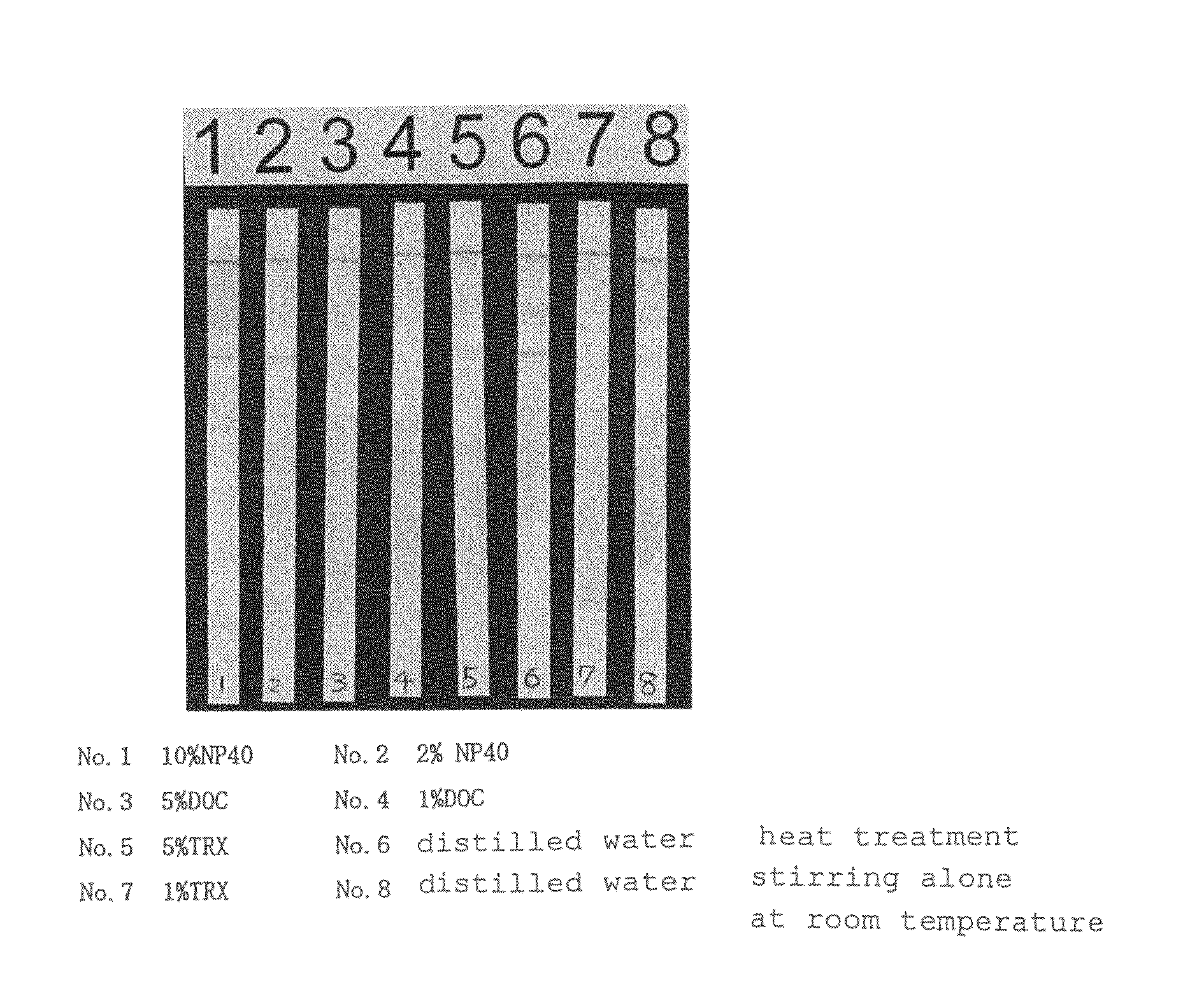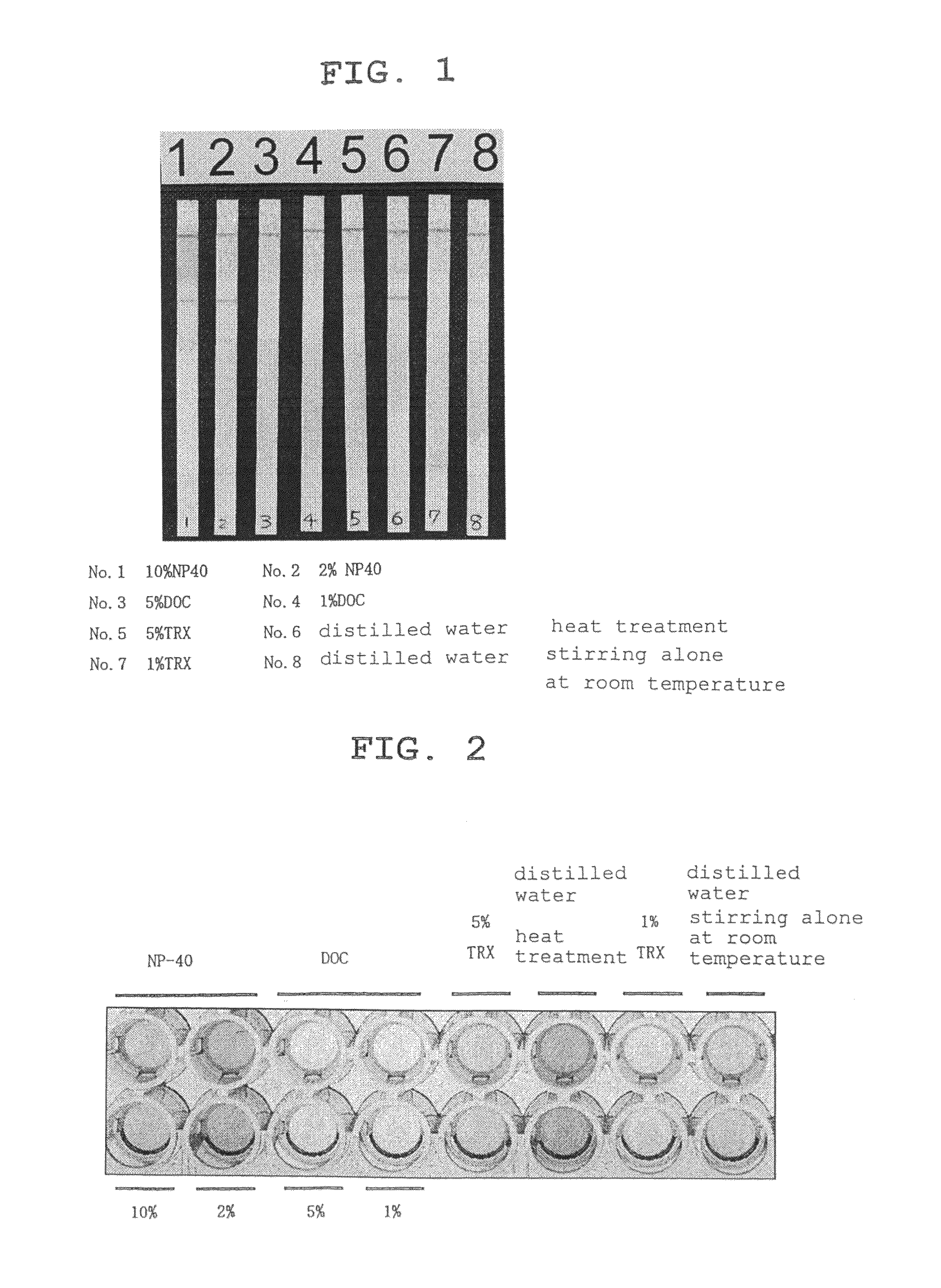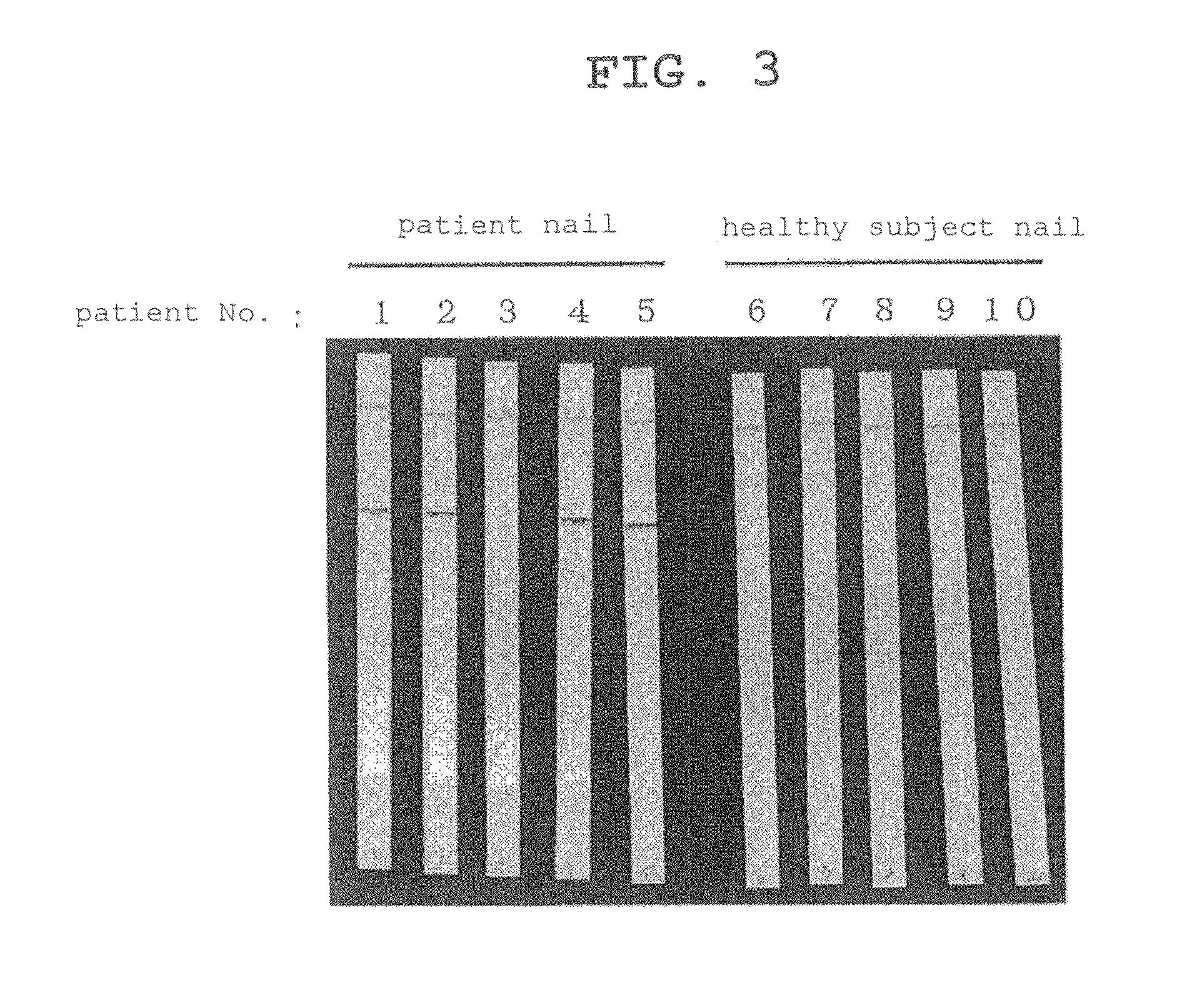Non-heating detection method for dermatophyte
a detection method and dermatophyte technology, applied in biochemistry apparatus and processes, instruments, material analysis, etc., can solve the problems of inconvenient and rapid detection of dermatophyte, affecting the detection accuracy of dermatophyte, and requiring considerable training for microscopic examination, etc., to achieve convenient, rapid and highly accurate detection of dermatophyte
- Summary
- Abstract
- Description
- Claims
- Application Information
AI Technical Summary
Benefits of technology
Problems solved by technology
Method used
Image
Examples
example 1
Preparation of Sample
[0104]As the surfactants, sodium deoxycholate (hereinafter DOC), which is an anionic surfactant, and NP-40 (polyoxyethylene nonylphenyl ether) and TNX (polyoxyethylene iso-octylphenyl ether), which are non-ionic surfactants, were used.
[0105]5 wt % and 1 wt % aqueous solutions were prepared for DOC, 10 wt % and 2 wt % aqueous solutions were prepared for NP-40, and 5 wt % and 1 wt % aqueous solutions were prepared for TNX. A nail from a tinea unguium patient definitively diagnosed by the KOH method was divided into 8 almost equivalent amounts. Six out of 8 nails were each placed in an aqueous surfactant solution (300 μl), and the mixture was stirred at room temperature (about 20° C.) for 20 min. As one control, one nail was placed in 300 μl of distilled water, and the mixture was stirred at room temperature (about 20° C.) for 20 min. For the other control, one nail was placed in 300 μl of distilled water, and the mixture was subjected to a heat treatment by placin...
example 2
Detection of Tinea Fungi by Tinea Fungi Diagnosis Strip Test
[0106]From the samples after each treatment, 120 μl was applied to a test piece for a tinea fungi diagnosis strip test produced using the 0014 antibody. The specific method is as follows.
1) Production of Antibody Solid-phased Support
[0107]To produce an antibody solid-phased support on which the 0014 antibody has been linearly solid-phased, a nitrocellulose sheet (Millipore, HiFlow Plus) was cut into 5 mm×20 mm, and the 0014 antibody solution was applied to the sheet at 10 mm from the lower end with BioJet Q3000 (Biodot), and dried at room temperature for 2 hr.
2) Preparation of Colloidal Gold Particle-labeled Material Holding Carrier
a. Colloidal Gold Particle-labeled 0014 Antibody
[0108]To a dispersion (100 mL) of colloidal gold having a particle size of 40 nm, which was adjusted to pH6.0 with 0.1% K2CO3 solution was added a monoclonal antibody 0014 solution (400 μg), and the mixture was admixed at room temperature. Then the ...
example 3
Detection of Antigen by ELISA
[0112]A treatment liquid sample similar to that prepared in Example 1 was measured by ELISA. The method was as follows.[0113]1) solid phasing of antibody: The 0014 antibody was diluted with 50 mM carbonate buffer (pH 9.6) to a concentration of 20 μg / ml, dispensed to each well of a 96 well microplate (#9018, Corning Incorporated) by 50 μl, and incubated overnight at 4° C.[0114]2) blocking: An aqueous Yukijirushi BlockAce 25% solution was prepared, dispensed by 300 μl, and incubated at room temperature for 1 hr.[0115]3) washing: PBS containing 0.05% Tween 20 (Nacalai Tesque) was dispensed by 300 μl, and washed by repeating stirring and discarding 3 times.[0116]4) antigen-antibody reaction with sample: A sample was added to each well by 50 μl, and the mixture was incubate at room temperature for 1 hr.[0117]5) The washing operation similar to the above-mentioned 3) was performed 3 times.[0118]6) A biotinylated 0014 antibody was diluted to 1 μg / ml with 10% aq...
PUM
| Property | Measurement | Unit |
|---|---|---|
| temperature | aaaaa | aaaaa |
| carbon number | aaaaa | aaaaa |
| carbon number | aaaaa | aaaaa |
Abstract
Description
Claims
Application Information
 Login to View More
Login to View More - R&D
- Intellectual Property
- Life Sciences
- Materials
- Tech Scout
- Unparalleled Data Quality
- Higher Quality Content
- 60% Fewer Hallucinations
Browse by: Latest US Patents, China's latest patents, Technical Efficacy Thesaurus, Application Domain, Technology Topic, Popular Technical Reports.
© 2025 PatSnap. All rights reserved.Legal|Privacy policy|Modern Slavery Act Transparency Statement|Sitemap|About US| Contact US: help@patsnap.com



